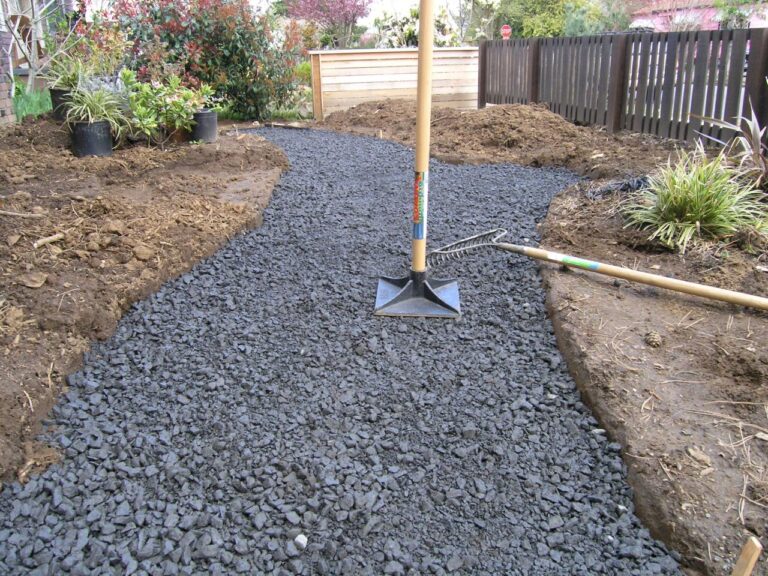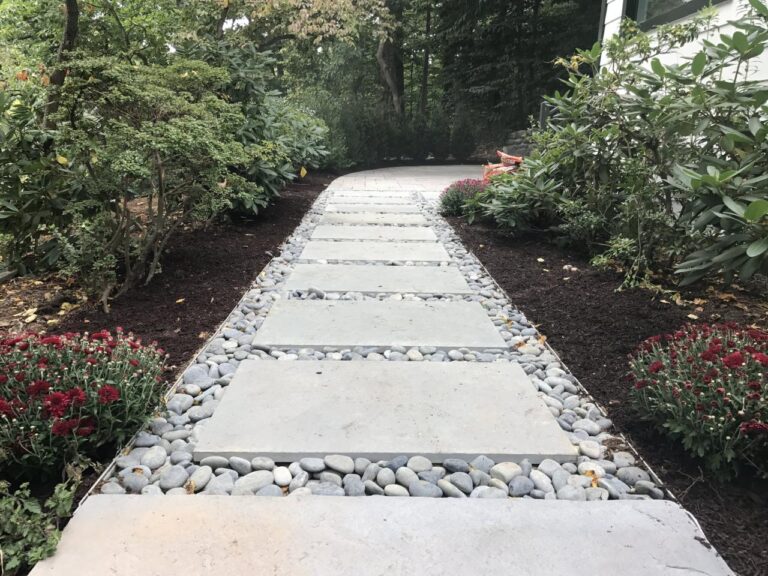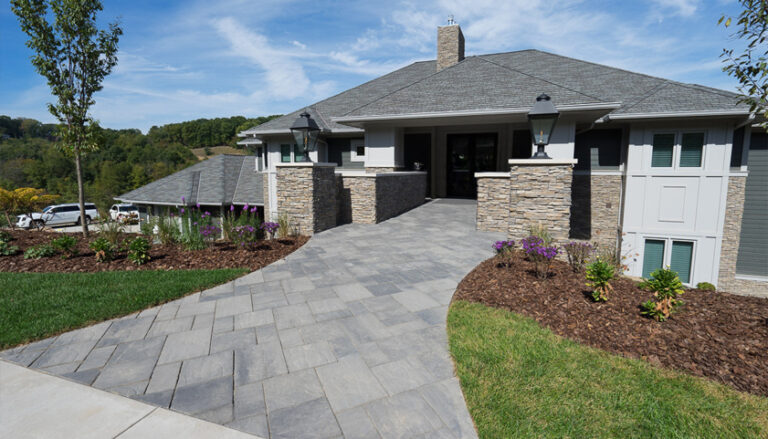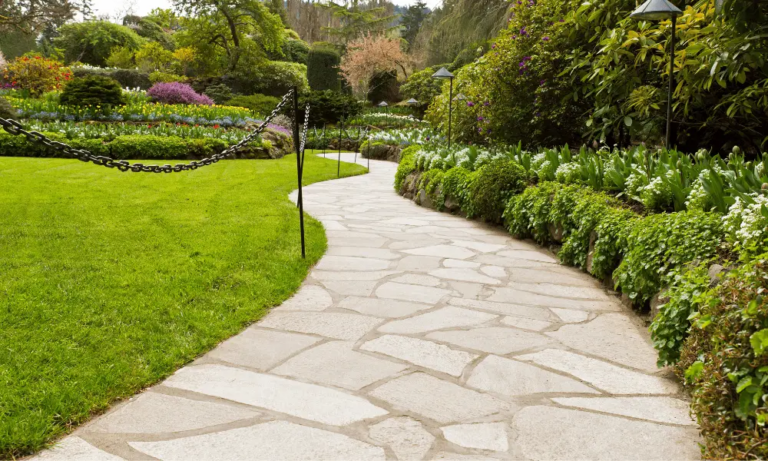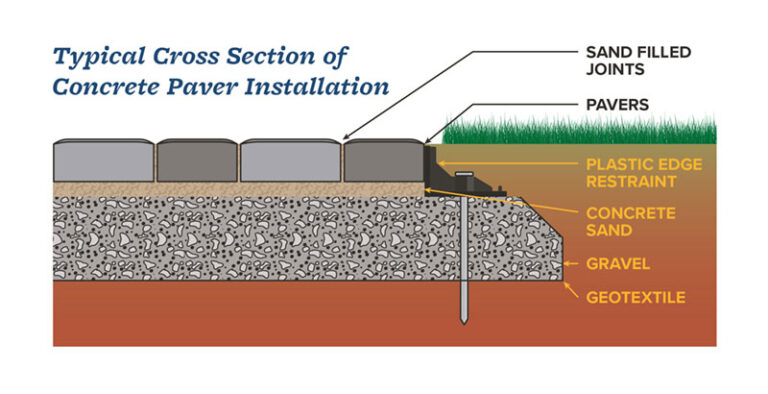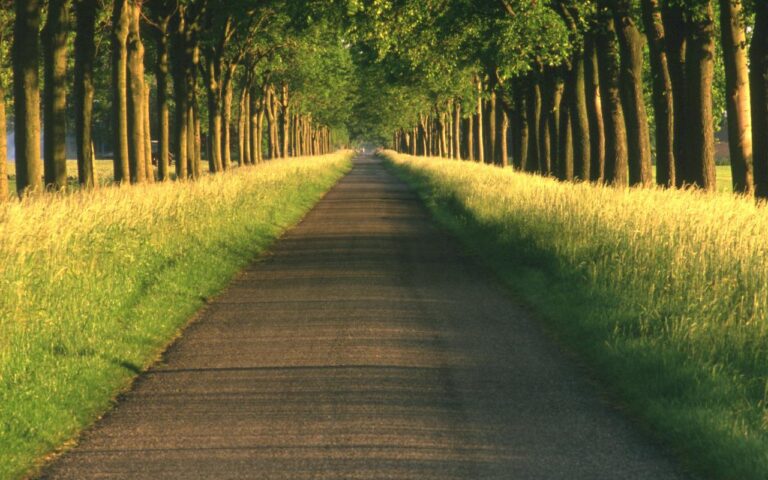Modern Front Walkway
Modern front walkways are more than just pathways; they’re architectural statements that enhance curb appeal and welcome guests. This guide explores the diverse world of modern walkway design, from selecting the perfect materials and styles to integrating landscaping for a cohesive and visually stunning effect. We’ll delve into practical considerations like accessibility and drainage, offering a comprehensive approach to crafting a walkway that’s both functional and aesthetically pleasing.
We will cover a range of styles, materials, and design considerations, providing you with the knowledge and inspiration to create a modern front walkway that perfectly complements your home’s architecture and personal style. From sleek concrete designs to the rustic charm of natural stone, we’ll explore the possibilities and help you navigate the design process with confidence.
Defining “Modern Front Walkway” Styles
A modern front walkway transcends mere functionality; it’s a statement piece reflecting the home’s architectural style and the homeowner’s aesthetic preferences. Several distinct styles cater to diverse tastes and architectural contexts. Understanding these styles and their defining characteristics allows for informed decision-making during the design process.
Five Modern Front Walkway Styles
Five prominent styles exemplify modern front walkway design: minimalist, geometric, natural, industrial, and eclectic. Each employs unique material choices and design principles.
- Minimalist: Characterized by clean lines, simple forms, and a restrained color palette. Often features a single material, such as smooth concrete or large-format pavers. Materials include polished concrete (pros: sleek, low-maintenance; cons: can be cold, prone to cracking), and large-format porcelain pavers (pros: durable, low maintenance; cons: expensive, can be slippery when wet).
- Geometric: Employs bold geometric patterns and shapes in the walkway’s layout or paving materials. Materials might include patterned concrete (pros: customizable, relatively affordable; cons: requires skilled craftsmanship, can crack), and textured pavers arranged in geometric designs (pros: visually interesting, durable; cons: can be more expensive than plain pavers, requires precise installation).
- Natural: Blends seamlessly with the surrounding landscape, often utilizing natural materials and organic forms. Materials include flagstone (pros: natural beauty, durable; cons: can be expensive, requires sealing), and gravel pathways (pros: inexpensive, permeable; cons: requires regular maintenance, not suitable for high-traffic areas).
- Industrial: Features raw, unfinished materials and a utilitarian aesthetic. Materials include exposed aggregate concrete (pros: durable, textured surface; cons: can be rough, requires sealing), and reclaimed brick (pros: unique character, sustainable; cons: can be expensive, may require significant cleaning).
- Eclectic: Combines elements from various styles, creating a unique and personalized look. Materials can include a mix of concrete, pavers, and natural stone, creating a visually rich and layered walkway (pros: highly customizable, reflects personal style; cons: can be more expensive and challenging to design and install).
Walkway Style Comparison
The following table compares the five styles based on cost, maintenance, and durability. Costs are relative and can vary significantly based on materials, labor, and location.
| Style | Cost | Maintenance | Durability |
|---|---|---|---|
| Minimalist | Medium to High | Low | High |
| Geometric | Medium to High | Medium | High |
| Natural | Medium to High | Medium to High | Medium to High |
| Industrial | Medium to High | Medium | High |
| Eclectic | High | Medium to High | Variable |
Materials for Modern Walkways
The choice of materials significantly impacts the aesthetic appeal, durability, and maintenance requirements of a modern walkway. Concrete, pavers, natural stone, and gravel each offer unique properties and visual characteristics.
Concrete Walkway Properties
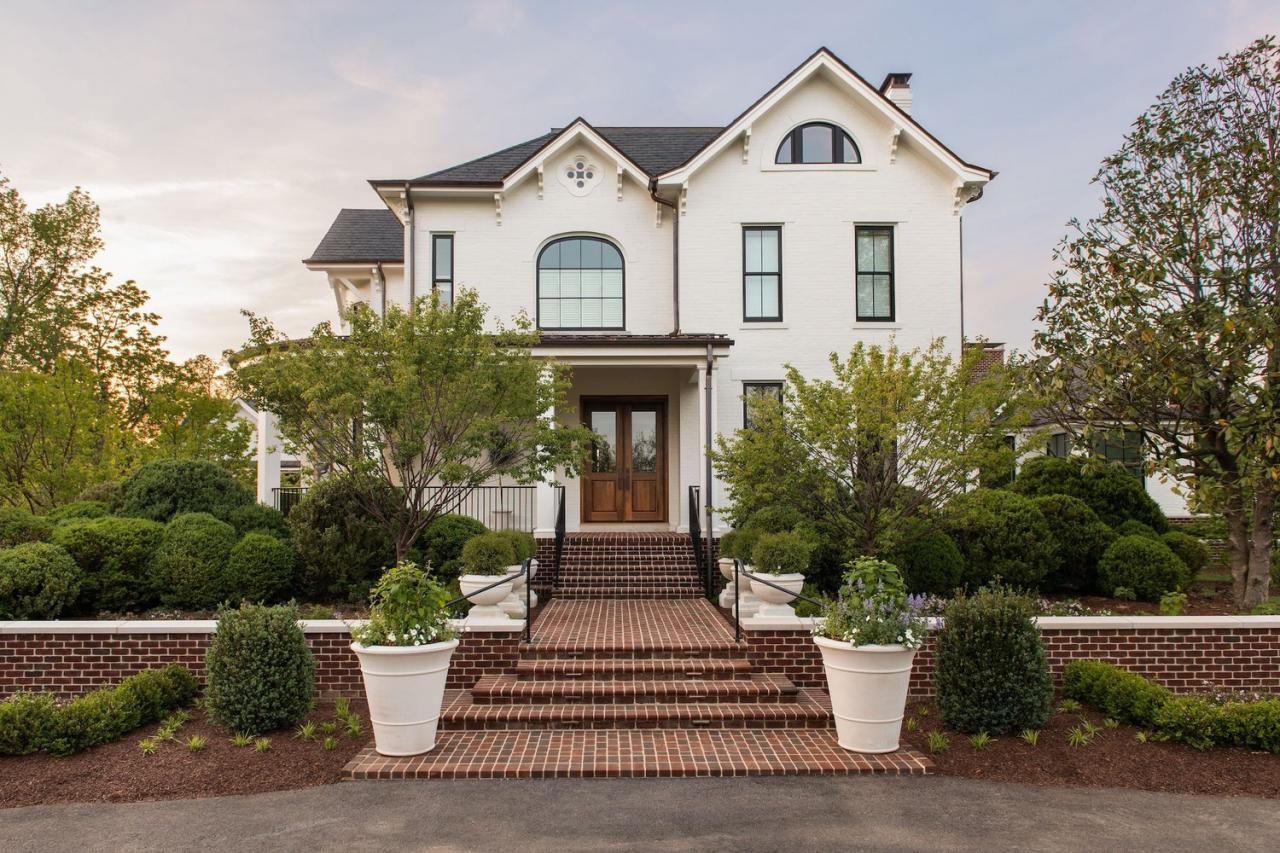
Source: futurecdn.net
Concrete offers versatility, durability, and cost-effectiveness. It can be poured into various shapes and textures, allowing for customization. However, it requires proper curing and sealing to prevent cracking and staining. A minimalist design might feature a smooth, polished concrete slab, while a geometric design could incorporate stamped or textured concrete patterns.
Paver Walkway Properties
Pavers, including brick, stone, and concrete pavers, provide flexibility in design and installation. They can be arranged in various patterns and easily replaced if damaged. However, pavers can be more expensive than concrete and may require more maintenance, such as weed removal between pavers. A geometric design might utilize pavers in a herringbone pattern, while a natural design could use irregularly shaped flagstone pavers.
Natural Stone Walkway Properties
Natural stone, such as slate, flagstone, and bluestone, offers a timeless and elegant aesthetic. It’s highly durable but can be expensive and require sealing to protect against staining and weathering. A natural walkway design might incorporate large, irregularly shaped flagstone pavers, creating a rustic and organic feel.
Gravel Walkway Properties
Gravel provides a cost-effective and permeable solution, particularly suitable for less formal settings. It’s easy to install but requires regular maintenance to prevent weed growth and erosion. A natural walkway design could incorporate a gravel path with stepping stones, creating a relaxed and informal look.
Walkway Design Examples
Three walkway designs illustrate the visual impact of different materials:
- Concrete Minimalist: A smooth, polished concrete slab with clean lines and a neutral gray color, creating a sleek and modern look.
- Paver Geometric: A walkway paved with dark gray concrete pavers arranged in a herringbone pattern, creating a visually striking and geometrically precise design.
- Natural Stone Rustic: A path composed of large, irregularly shaped flagstone pavers in varying shades of brown and beige, creating a natural and rustic feel that complements a surrounding garden.
Designing for Functionality and Accessibility
Functionality and accessibility are paramount in walkway design. Careful consideration of slope, drainage, and ADA guidelines ensures a safe and user-friendly pathway for all.
Slope and Drainage Considerations
Proper slope and drainage prevent water accumulation, which can lead to erosion, damage to the walkway materials, and safety hazards. A gentle slope of at least 1-2% is recommended to direct water away from the house and towards established drainage points. This might involve creating a slight grade in the walkway’s design or incorporating drainage channels or gravel beds.
Accessibility for People with Disabilities
Adhering to ADA guidelines is crucial for ensuring accessibility. This includes maintaining a smooth, even surface free from abrupt elevation changes. Ramps with appropriate slopes are necessary for overcoming elevation changes, and handrails should be provided where necessary. The walkway surface should be slip-resistant, especially in wet conditions.
Walkway Lighting for Safety and Aesthetics
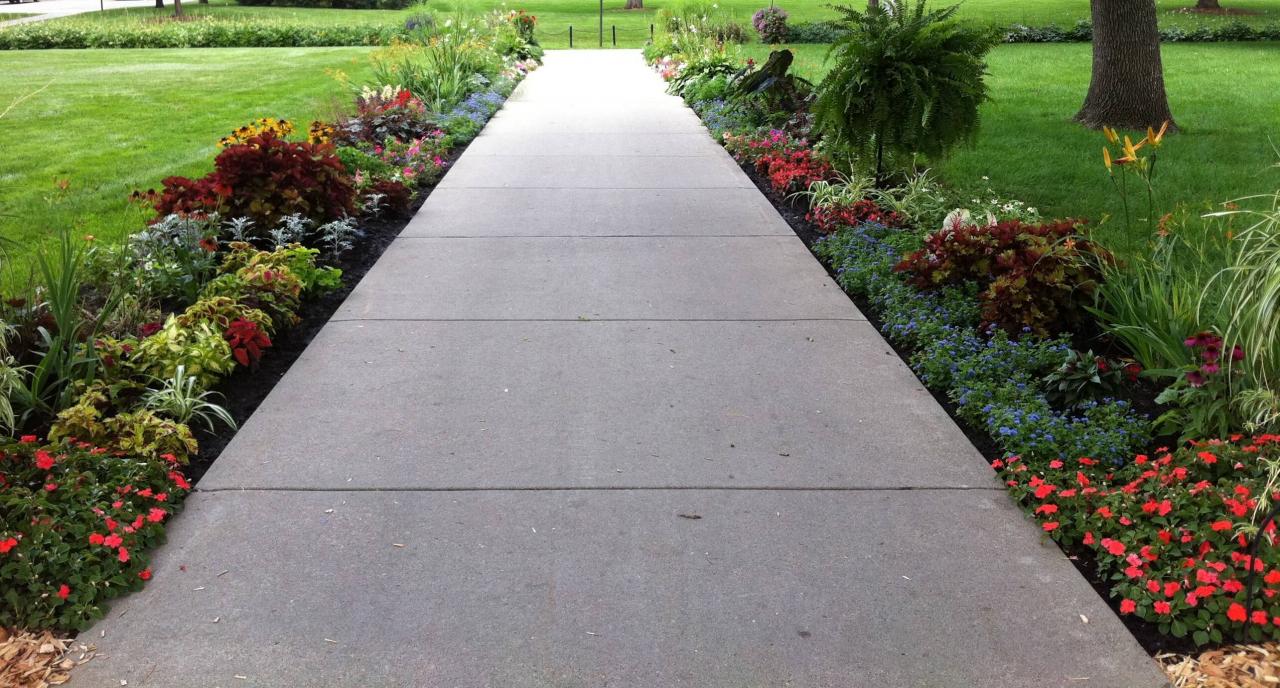
Source: liveenhanced.com
Incorporating lighting enhances both safety and aesthetics. Low-voltage landscape lighting can illuminate the walkway, providing visibility at night and enhancing the walkway’s visual appeal. Lighting should be strategically placed to avoid glare and create a welcoming atmosphere. Different lighting options, like path lights, bollards, or uplighting, can be chosen to suit the overall design aesthetic.
Integrating Landscaping with the Walkway
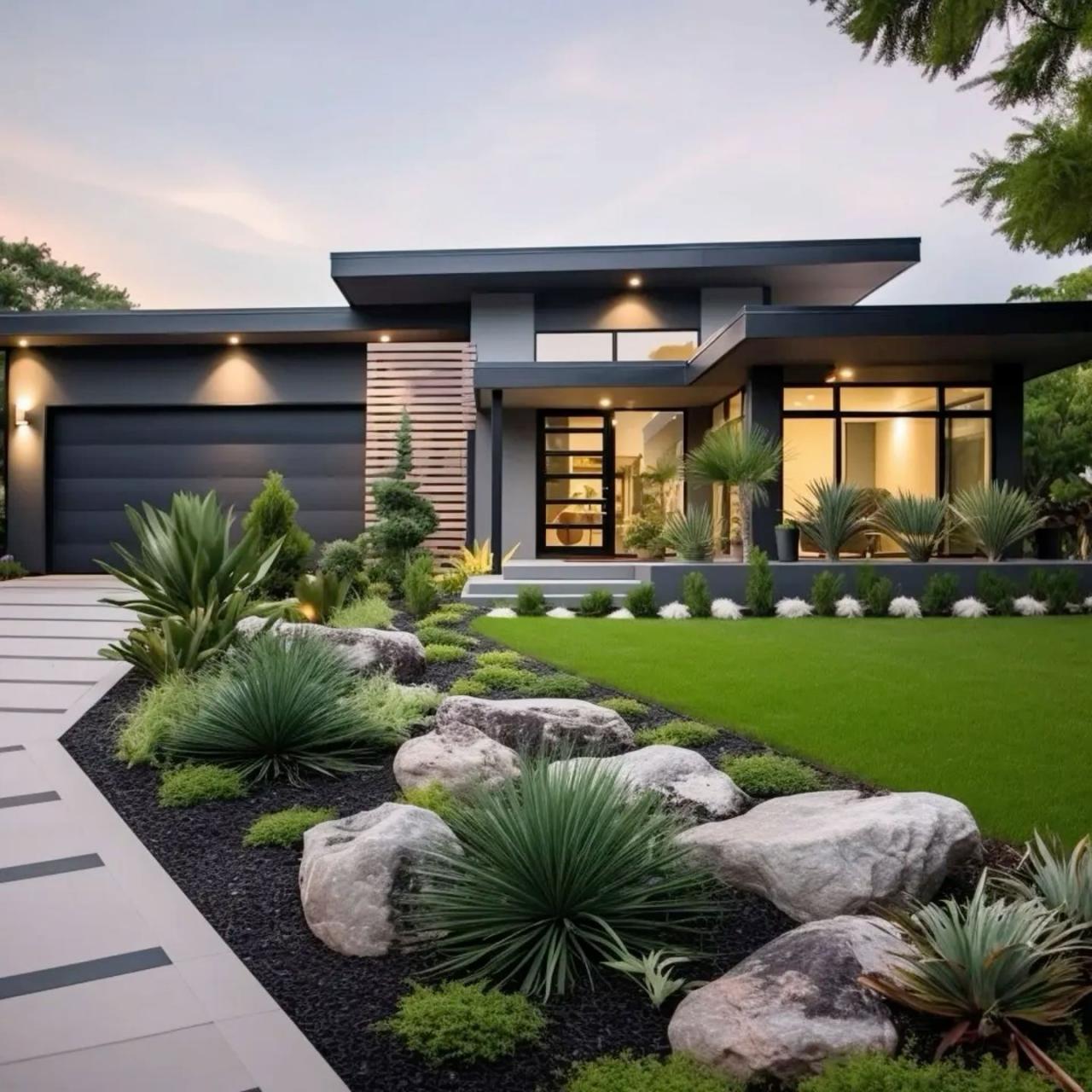
Source: pinimg.com
Seamless integration of the walkway with surrounding landscaping elements enhances the overall aesthetic appeal and creates a cohesive outdoor space. Careful selection of plants and hardscaping materials is key to achieving a harmonious design.
Landscaping Elements for Modern Walkways
Modern walkway designs often incorporate low-maintenance plants that complement the walkway’s materials and style. Examples include drought-tolerant grasses, succulents, and groundcovers. Hardscaping elements, such as retaining walls, steps, and seating areas, can further integrate the walkway into the landscape. For instance, a minimalist walkway might be complemented by a clean-lined retaining wall and sparse, architectural plants.
Visual Description of an Integrated Walkway
Imagine a modern walkway paved with large, rectangular concrete pavers, leading from the front door to a garden. Low-growing succulents and ornamental grasses flank the walkway, creating a soft contrast against the hard lines of the pavers. A small, minimalist seating area is integrated into the design, providing a place to rest and enjoy the garden. The overall design is clean, simple, and harmonious, reflecting a modern aesthetic.
Modern Walkway Trends and Inspirations: Modern Front Walkway
Modern walkway design is constantly evolving, with new trends emerging regularly. Staying updated on these trends provides valuable inspiration for creating unique and stylish walkways.
Current Trends in Modern Walkway Design, Modern Front Walkway
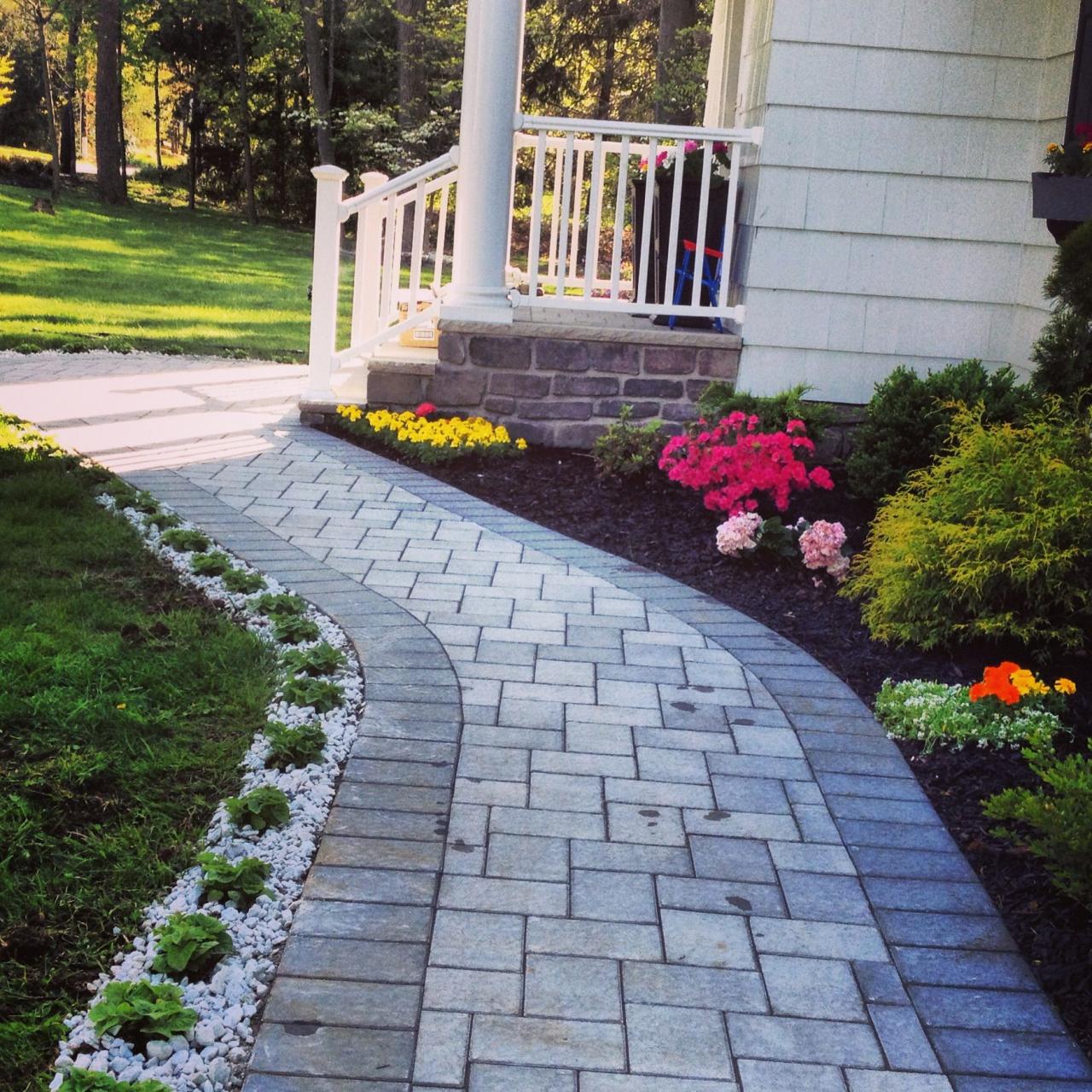
Source: pinimg.com
- Natural Materials: The use of natural materials like stone and wood is increasing in popularity, reflecting a growing preference for sustainable and environmentally friendly design.
- Geometric Patterns: Bold geometric patterns and shapes continue to be a popular choice, adding visual interest and a contemporary feel.
- Integrated Lighting: The incorporation of lighting into walkway designs is becoming increasingly sophisticated, with designers using a variety of lighting techniques to enhance both safety and aesthetics.
Resources for Further Exploration
Several resources offer further insights into modern walkway design:
- Architectural Digest
- Dwell Magazine
- Houzz
- Various landscape design books are available at bookstores and online.
Creating a Detailed Walkway Design Plan
A detailed design plan is essential for ensuring a successful walkway project. This plan should include precise dimensions, material specifications, and landscaping details.
Steps in Creating a Walkway Design Plan
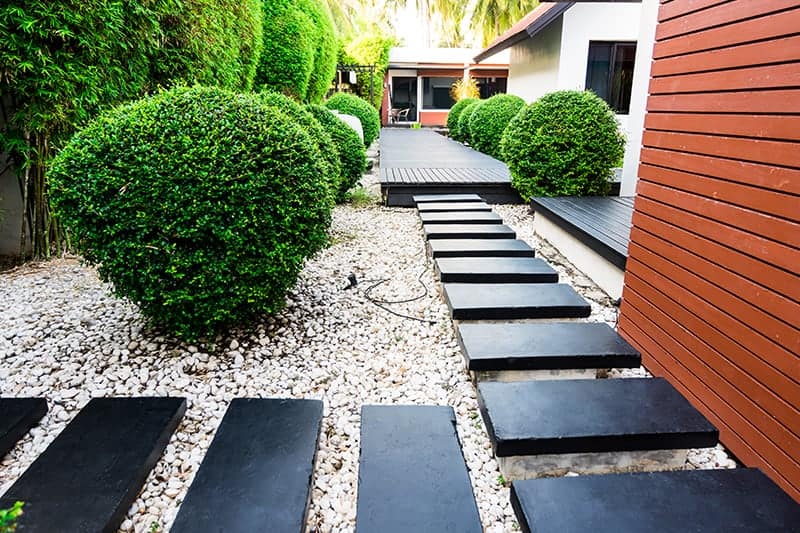
Source: trees.com
- Measure the area: Accurately measure the space where the walkway will be located, noting any existing features such as trees, shrubs, or other structures.
- Sketch the design: Create a rough sketch of the walkway, including its length, width, and any curves or changes in direction. Consider the overall style and materials.
- Choose materials: Select the materials for the walkway based on your budget, aesthetic preferences, and overall design style.
- Create a scaled drawing: Develop a scaled drawing of the walkway design, including detailed annotations and dimensions. This will serve as a blueprint for the installation process.
- Calculate materials: Calculate the quantity of materials needed, factoring in waste and potential adjustments.
- Develop a budget: Estimate the total cost of the project, including materials, labor, and any permits required.
Creating a Scaled Drawing
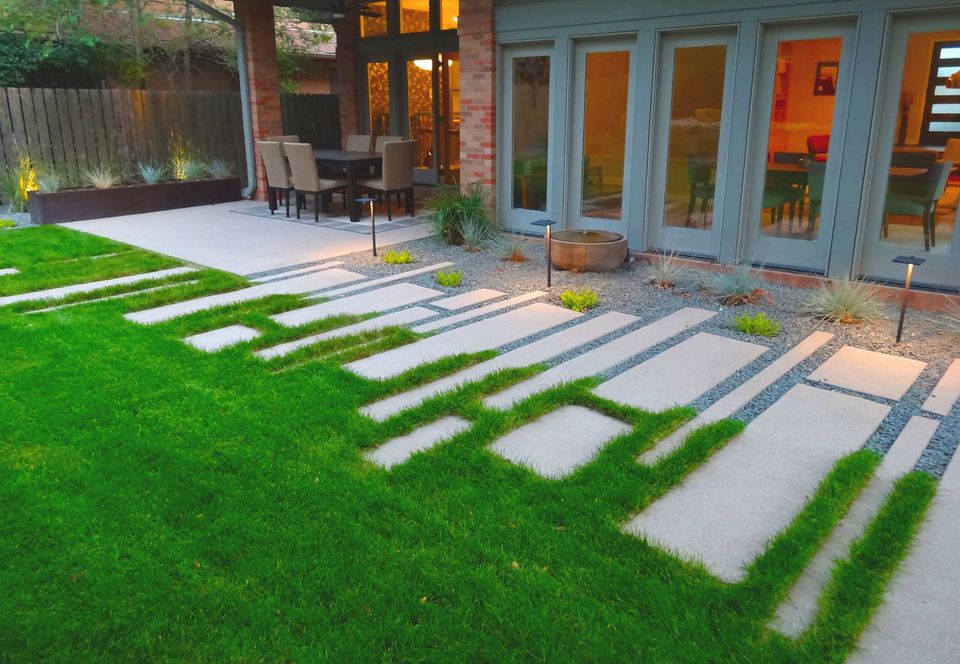
Source: tqn.com
A scaled drawing is crucial for an accurate representation of the walkway. Using graph paper and a consistent scale (e.g., 1 inch = 1 foot), accurately depict the walkway’s dimensions, curves, and any changes in direction. Include annotations to specify materials, dimensions, and other relevant details. This detailed drawing will be invaluable for contractors and ensure the final product aligns precisely with the design.
FAQ Summary
What is the average cost of a modern front walkway?
The cost varies significantly depending on size, materials, and labor. Expect to invest anywhere from a few hundred to several thousand dollars.
How long does it take to install a modern front walkway?
Installation time depends on the size and complexity of the project, as well as weather conditions. Smaller projects might take a few days, while larger ones could take several weeks.
How often should I maintain my modern front walkway?
Maintenance depends on the material. Concrete may require occasional sealing, while pavers might need occasional weeding. Regular sweeping is recommended for all materials.
Can I install a modern front walkway myself?
While some simpler projects are DIY-friendly, more complex designs often require professional installation to ensure proper drainage, slope, and adherence to building codes.
What are some eco-friendly options for modern front walkways?
Consider using recycled materials like reclaimed pavers or permeable paving stones that allow water to seep into the ground, reducing runoff.
